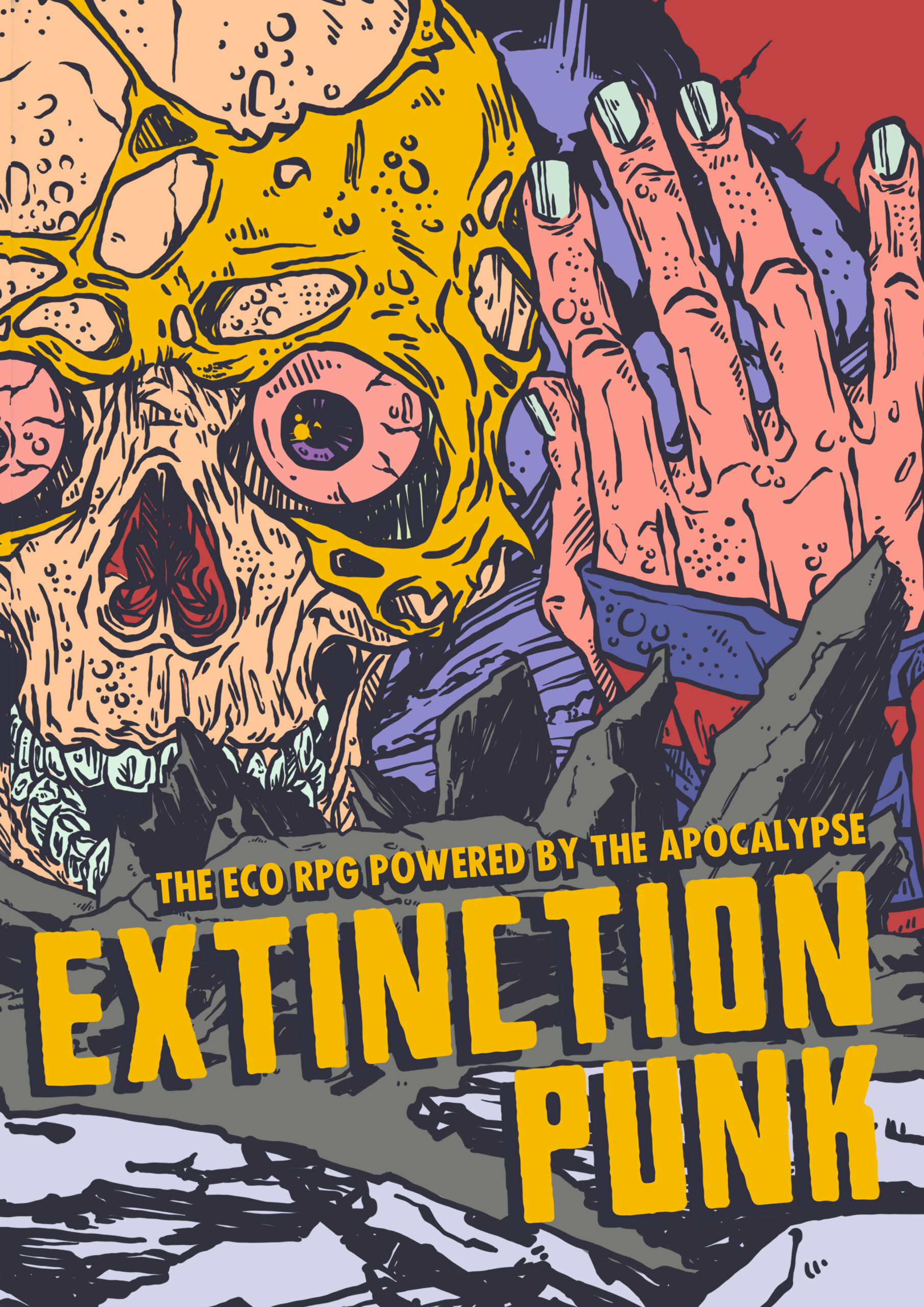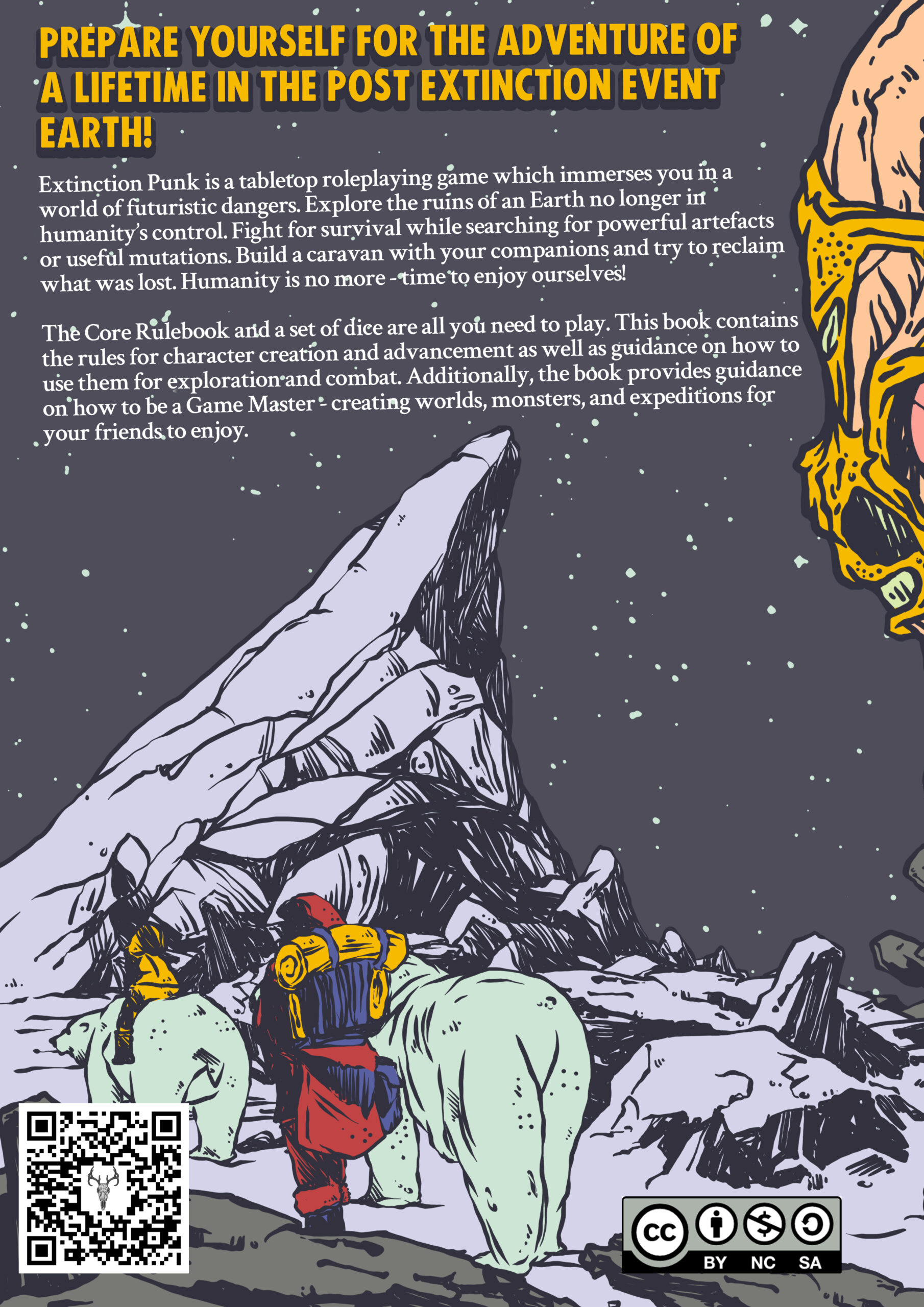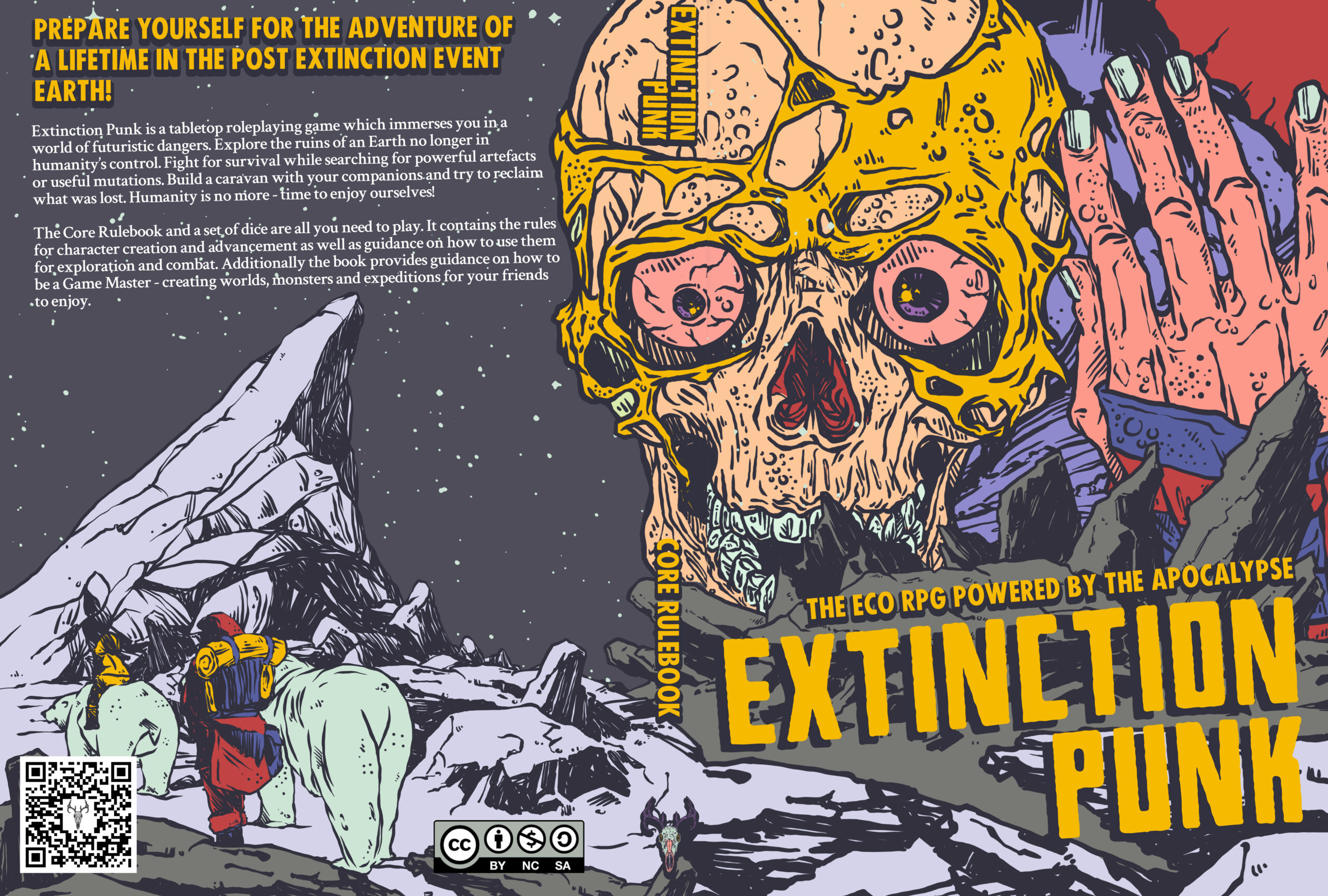The free tabletop role-playing game (TTRPG) set in a post extinction event Earth!
Extinction Punk is a table-top role-playing game (TTRPG) that blends elements of science fiction and science fantasy to envision a future where humanity fails to stop a man-made extinction event such as a climate cataclysm, a nuclear holocaust, or a biological war.
Players of Extinction Punk get to explore the ruins of an Earth that is no longer under humanity’s control and encounter the (not necessarily) human civilizations that rise from the ashes. Together with the person organizing the game (the Game Master, or GM for short), the players create characters that will fight for survival while searching for powerful artefacts or useful mutations.
All you need to play the game are this Core Rulebook and a set of six-sided dice. The following chapters contain the rules for character creation and advancement as well as guidance on how to manage exploration and combat. Additionally, this Rulebook provides guidance for the GM on how to create worlds, monsters, and expeditions for their friends.
So, if any of this sounds enticing to you, continue reading!
Click the Cover to Download the current Version
What differentiates this game from other roleplaying games?
Extinction Punk and its mechanics are largely based on Apocalypse World by D. Vincent & Meguey Baker and games like it, mainly Dungeon World and Monster of the Week (which are all excellent and you should check them out).
Like those games, Extinction Punk is a narrative-driven, streamlined tabletop role-playing game. Its main features are:
- Fast and guided character-creation
- Easy to understand rules thanks to the PANIC system and its corresponding 10 moves
- Empowered game master (GM) mechanics, which allow for more cinematic play through open narration.
- Mutation mechanics, which give players another vector for growth and self-expression.
- Hostile world events to give the GM an easy way to improvise encounters on the way to an expedition’s goal.
- Mechanics split into basic rules which are focused on the characters and their actions, to be used for one-shots and in the beginning of the adventure as well as advanced rules, if the players want to shift their playstyle towards resource collection and base-building.
What inspired the world of Extinction Punk?
The tropes of Extinction Punk came to us by observing some pieces of popular media of the past 5-10 years. While not all of these things fit exactly into the world of Extinction Punk, a lot of them do. So much so, that we are convinced Extinction Punk the genre will establish itself (although probably under a different name) anytime soon.
Our newest posts
Extinction Punk: Version 1.0
The official release version of Extinction Punk - available [...]
Extinction Punk: Version 0.5
The final character joins the party - explore Extinction [...]
Extinction Punk: Version 0.4
The first step to advanced Extinction Punk - build [...]
Extinction Punk: Version 0.3
The second patch of Extinction Punk - new character [...]
Extinction Punk: Version 0.2
The first patch of Extinction Punk - character sheets [...]
Extinction Punk: Version 0.1
The Original Release of Extinction Punk - Warts and [...]











